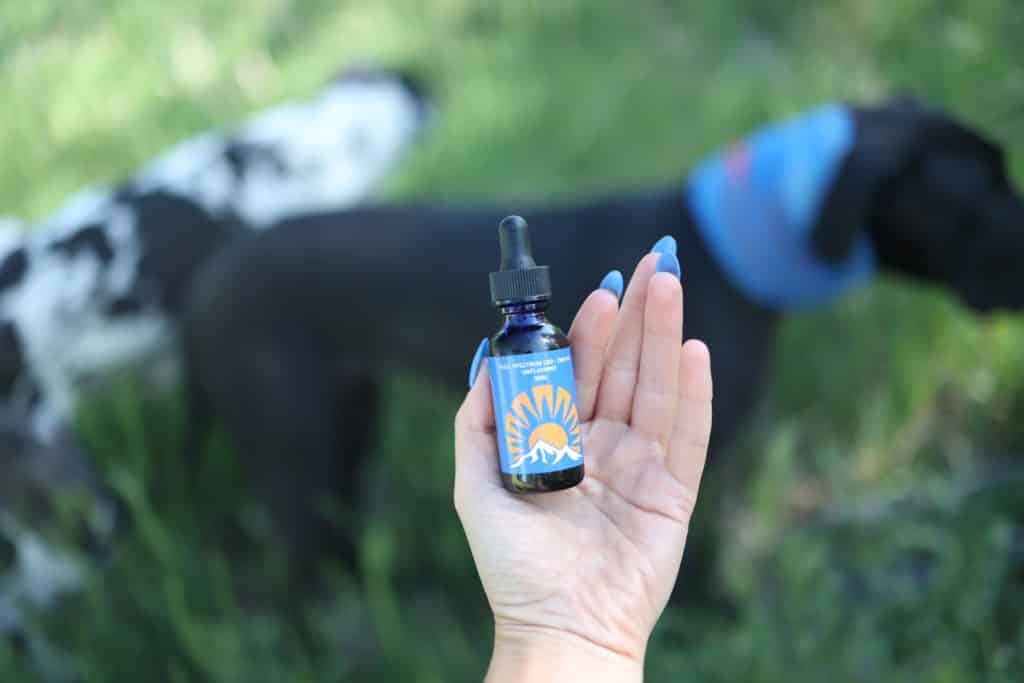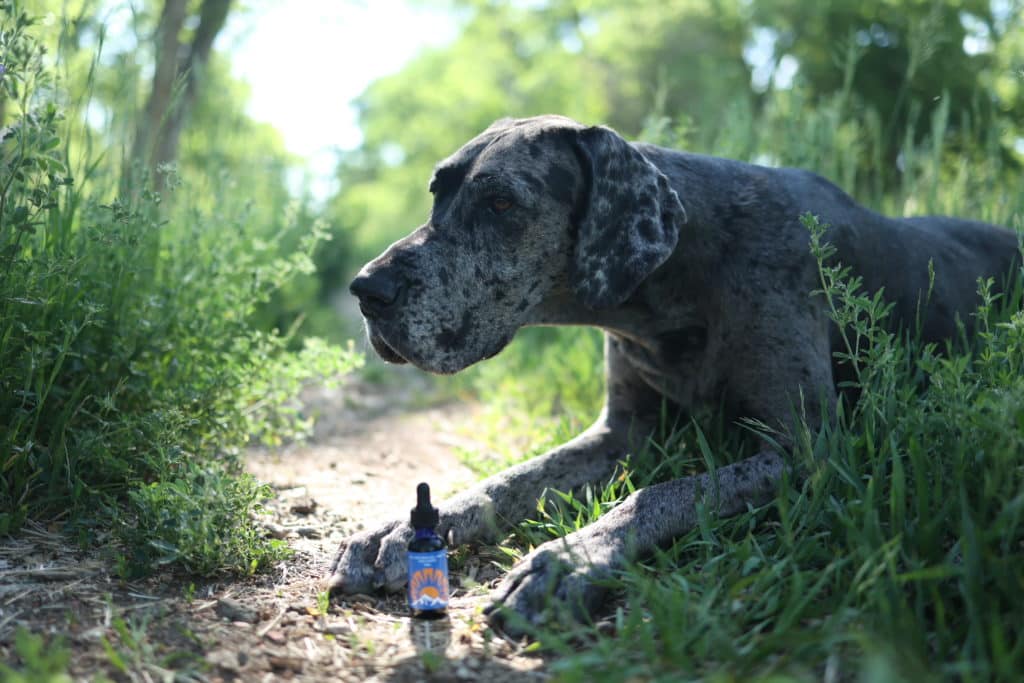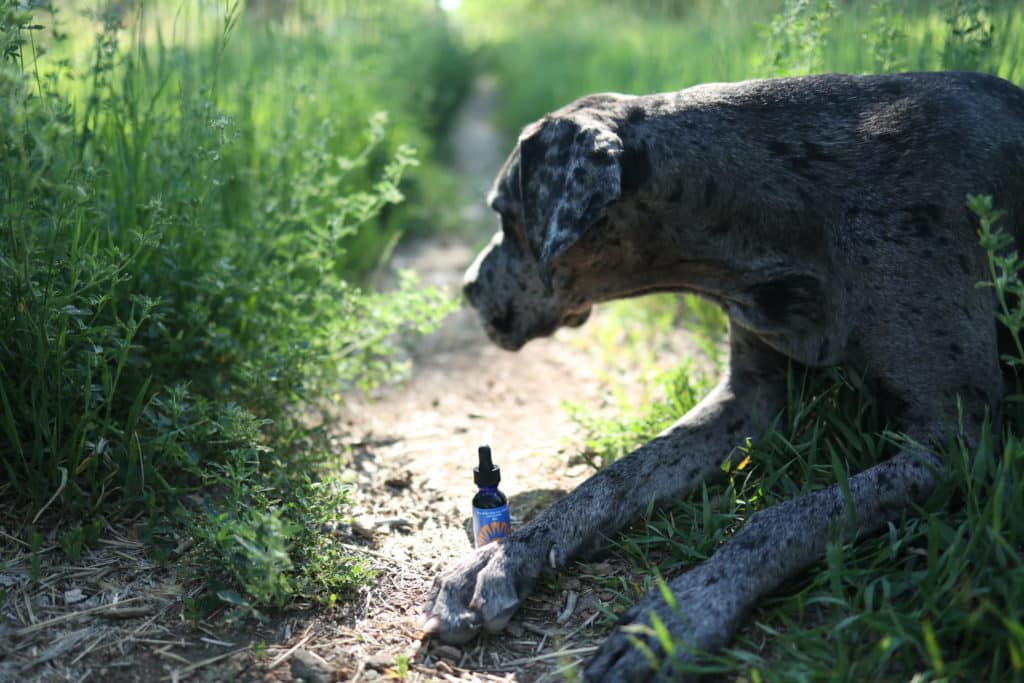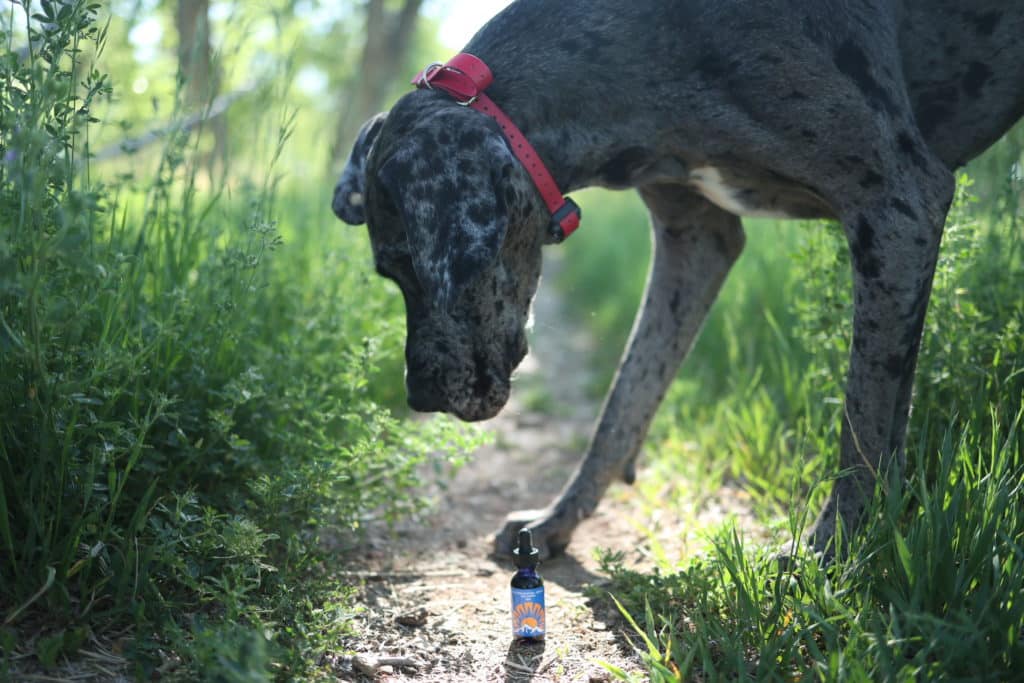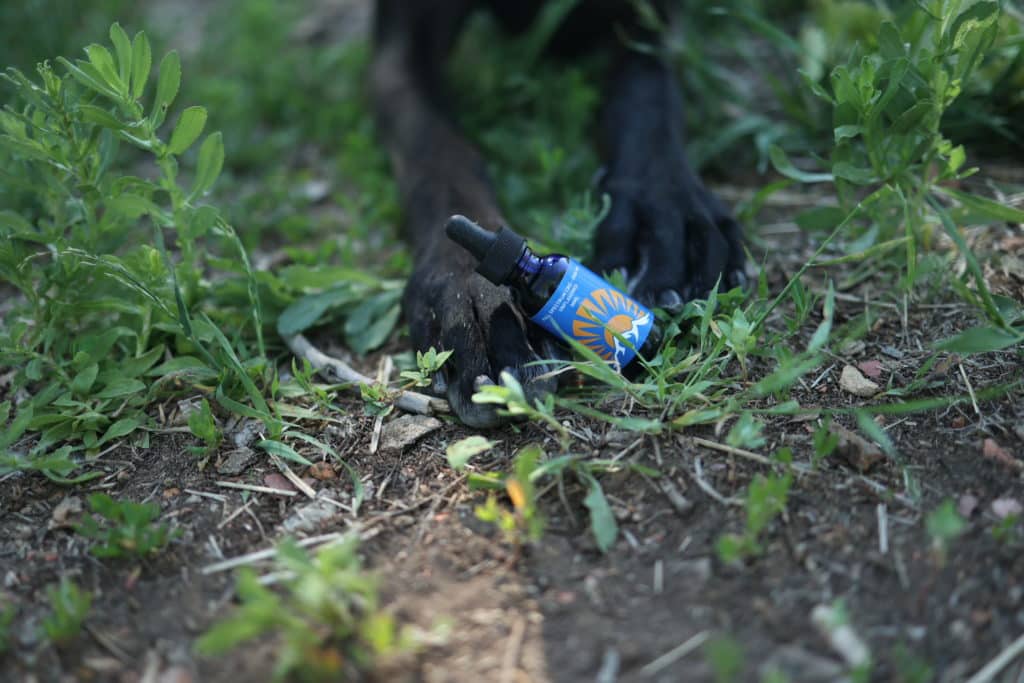If your dog experiences a seizure, it can be a frightening and distressing situation. However, it’s crucial to stay calm and take appropriate steps to ensure your dog’s safety. Here’s some information on what seizures look like in dogs, what causes them, and what you should do if your dog has a seizure.

What Does a Seizure Look Like in a Dog?
Seizures in dogs can manifest in various ways, depending on the type and severity of the seizure. If you have seen your dog exhibit any of the following symptoms, they may have experienced one and need to see a veterinarian.
Here are some common characteristics of seizures in dogs:
- Convulsions: This is the most recognizable sign of a seizure. It involves uncontrolled muscle contractions, often causing the dog’s body to stiffen and jerk. The legs may paddle, and the head may tilt or shake.
- Loss of Consciousness: During a seizure, a dog may lose consciousness or appear disoriented. They may not respond to their name or familiar stimuli.
- Excessive Drooling: Dogs may drool excessively during a seizure, sometimes accompanied by foaming at the mouth.
- Involuntary Urination or Defecation: Seizures can cause loss of bladder or bowel control due to muscle spasms.
- Altered Behavior: Some dogs may exhibit unusual behaviors before, during, or after a seizure, such as pacing, whining, or hiding.
- Aura: In some cases, dogs may experience an “aura” or pre-seizure phase characterized by restlessness, anxiety, or unusual behavior shortly before the seizure occurs.
- Post-Ictal Phase: After the seizure ends, dogs may enter a post-ictal phase characterized by confusion, disorientation, weakness, or temporary blindness. This phase can last from minutes to hours.
- Vocalization: Some dogs may vocalize during a seizure, such as barking, whimpering, or howling.
It’s important to note that not all seizures look the same, and the severity and duration can vary. Additionally, some seizures may be focal, affecting only one part of the body, while others may be generalized, involving the entire body.
If you suspect your dog is having a seizure, it’s essential to stay calm, ensure their safety, and seek veterinary care promptly. Your veterinarian can help diagnose the underlying cause of the seizures and recommend appropriate treatment and management options.
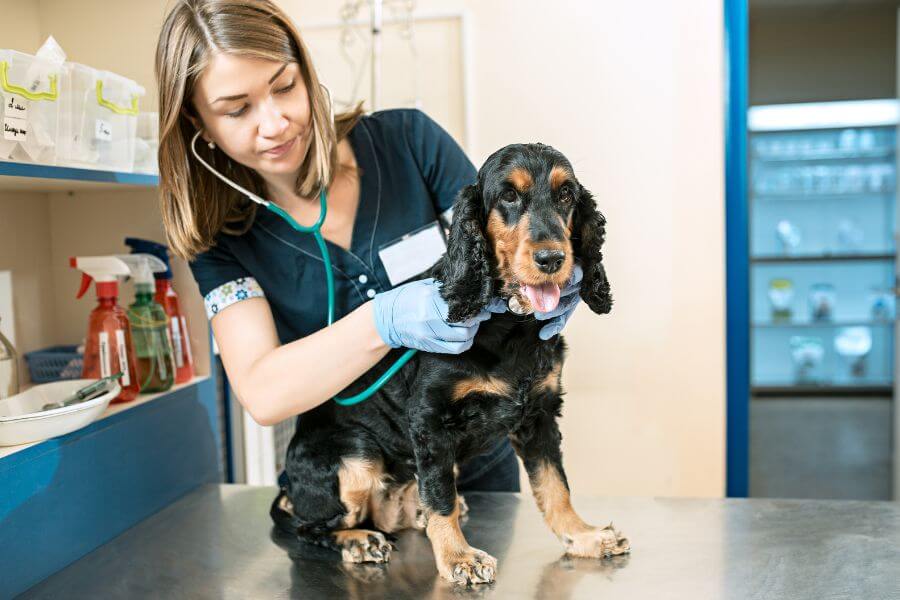
What To Do If Your Dog Has a Seizure
If your dog experiences a seizure, or if you think they may have, it can be a frightening and distressing situation. However, it’s crucial to stay calm and take appropriate steps to ensure your dog’s safety.
Here’s what you should do if your dog has a seizure:
- Stay Calm: Your dog can sense your emotions, so it’s important to remain as calm as possible. Panicking may agitate your dog further.
- Ensure Safety: Move any objects or furniture that could harm your dog during the seizure. Create a safe space by cushioning the area around them. Make sure your pet cannot fall off of a couch or bed during the seizure.
- Time the Seizure: Note the time when the seizure begins and ends. This information will be valuable for your veterinarian. Write it down ASAP, as your memory of the event may be clouded by the stress you experienced when it happened.
- Do Not Restrain: Avoid restraining your dog during a seizure. This could lead to accidental injury to you or your pet. Instead, gently guide them away from potential hazards.
- Protect Their Head: If your dog is thrashing, gently place a soft cloth or towel under their head to prevent injury.
- Observe and Record: Note the duration and characteristics of the seizure. Pay attention to any unusual behaviors or symptoms your dog exhibits before, during, and after the event. As above, writing this information down as soon as you can will help you better remember it.
- Keep Quiet: Reduce noise and disturbances around your dog to minimize stress.
- Stay Nearby: Keep a close watch on your dog until the seizure subsides. Reassure them with a soothing voice once the seizure ends.
- Consult a Veterinarian: After the seizure, contact your veterinarian for guidance. They may recommend bringing your dog in for an examination to determine the underlying cause and discuss potential treatment options.
- Follow-up: Follow any instructions provided by your veterinarian and continue to monitor your dog for any recurring seizures or changes in behavior.

How are Seizures in Dogs Treated?
Treating seizures in dogs involves addressing the underlying cause, managing the frequency and severity of seizures, and providing supportive care. Never attempt to treat seizures at home. Always consult with a veterinarian.
Here are common treatment approaches for seizures in dogs:
- Medication: Anticonvulsant medications are often prescribed to control seizures. These medications, such as phenobarbital, potassium bromide, or levetiracetam, work to stabilize brain activity and reduce the frequency and severity of seizures. The dosage and type of medication may vary depending on the individual dog’s needs and response.
- Dietary Management: Your veterinarian can recommend an appropriate diet based on your dog’s condition and nutritional needs. Note that there is not a lot of research supporting the use of a ketogenic diet to treat dog seizures, and some diets may interfere with medications. It’s important to talk to your veterinarian about feeding your pet.
- Monitoring and Adjustments: Regular monitoring of your dog’s seizure activity and response to medication is essential. Your veterinarian may need to adjust the medication dosage or try different medications to achieve optimal seizure control while minimizing side effects.
- Addressing Underlying Conditions: If seizures are caused by an underlying medical condition, such as liver disease, kidney disease, or a brain tumor, treating the underlying cause is crucial. This may involve additional diagnostic tests, surgery, or other medical interventions.
- Avoiding Triggers: Identify and minimize potential triggers that can provoke seizures in your dog. This may include managing stress, maintaining a consistent routine, and providing a safe and comfortable environment.
- Emergency Care: In cases of prolonged or severe seizures (status epilepticus), emergency veterinary care may be necessary to stabilize the dog and prevent complications. Intravenous medications may be administered to stop ongoing seizures and prevent further brain damage.
- Lifestyle Modifications: Certain lifestyle modifications, such as regular exercise, adequate rest, and stress management techniques, may help reduce the frequency and severity of seizures in some dogs.
Overall, managing seizures in dogs often requires a multi-faceted approach tailored to the individual dog’s needs and circumstances. Close collaboration between you and your veterinarian is essential to develop an effective treatment plan and optimize your dog’s quality of life.

What Causes Seizures in Dogs?
Seizures in dogs can be caused by a variety of factors and some may be out of your control.
Common causes of seizures in dogs include:
- Epilepsy: This is a neurological disorder characterized by recurrent seizures without an identifiable underlying cause. It can be genetic and may develop later in life.
- Toxins: Ingestion of certain toxins, such as pesticides, rodenticides, plants (like certain mushrooms or toxic plants), or household chemicals, can lead to seizures (more on this below).
- Metabolic Disorders: Conditions such as hypoglycemia (low blood sugar), liver disease, kidney disease, or electrolyte imbalances can trigger seizures.
- Infections: Infectious diseases like distemper, encephalitis, or meningitis can affect the brain and cause seizures.
- Trauma: Head injuries or trauma to the brain can result in seizures.
- Brain Tumors: Tumors or masses in the brain can cause seizures as they put pressure on surrounding brain tissue.
- Idiopathic Vestibular Disease: This condition affects the inner ear and can sometimes lead to episodes resembling seizures, although they are not true seizures. Read more HERE.
- Stroke: Just like in humans, strokes can occur in dogs and may result in seizures.
- Heat Stroke: Exposure to high temperatures can cause heat stroke, which can lead to seizures among other symptoms.
- Genetic Disorders: Certain breeds may be predisposed to genetic conditions that increase the risk of seizures, such as idiopathic epilepsy in breeds like Beagles, Dachshunds, and Golden Retrievers.
- Autoimmune Disorders: Conditions like autoimmune encephalitis can cause inflammation of the brain, leading to seizures.
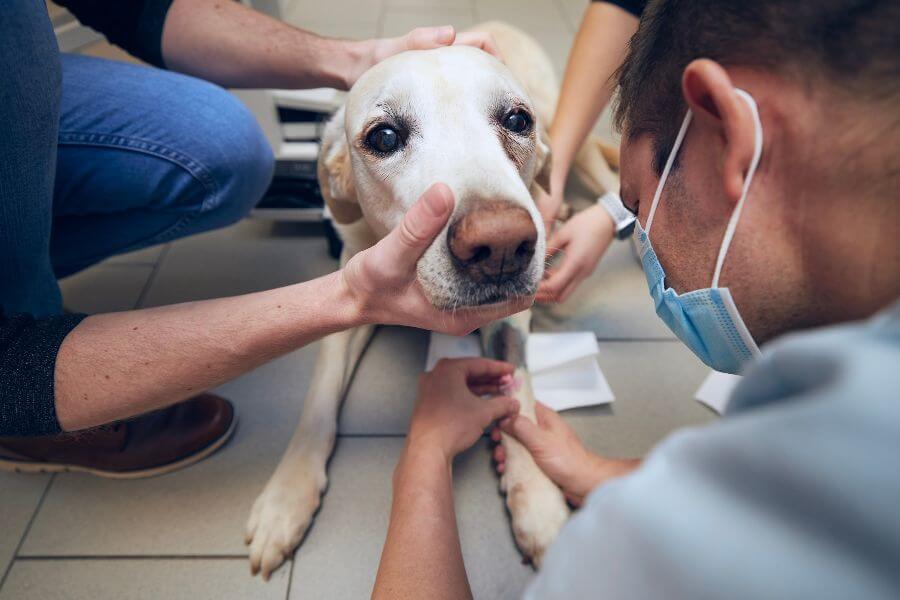
Do Flea and Tick Medications Cause Seizures?
While rare, there have been reports of adverse reactions, including seizures, associated with certain flea and tick medications in dogs (including “natural” options made with essential oils).
These reactions are typically uncommon and often occur in dogs with pre-existing health conditions or sensitivities.
The active ingredients in flea and tick medications, such as essential oils, fipronil, permethrin, or pyrethroids, can sometimes cause adverse reactions in sensitive individuals. These reactions may include neurological symptoms like tremors, seizures, or other abnormal behaviors.
However, it’s a myth that these products are regularly causing neurological symptoms in pets.
It’s worth noting that using the wrong product, purchasing a knockoff, or applying incorrect doses can increase the risk of adverse reactions, including seizures.
To minimize the risk of adverse reactions to flea and tick medications in your dog:
- Consult with your veterinarian before starting any flea and tick prevention program. Your veterinarian can recommend the most appropriate product based on your dog’s age, size, health status, and lifestyle.
- Always use flea and tick medications according to the manufacturer’s instructions. Follow the recommended dosage, application method, and frequency of administration.
- Monitor your dog for any signs of adverse reactions after administering flea and tick medications. If you notice any unusual symptoms, including seizures, contact your veterinarian immediately for guidance.
- Be cautious when using flea and tick products in households with multiple pets, as some medications formulated for dogs may be toxic to cats and other animals.
- Understand that these risks are not isolated to veterinary flea and tick prevention: in many cases, “natural” alternatives may carry more risk, not less.
Abstaining from veterinary flea and tick prevention can leave your pet susceptible to infestations, potentially leading to discomfort, skin irritation, and the transmission of diseases carried by these parasites.

Does Kibble Cause Seizures?
There’s no direct evidence to suggest that kibble, as a general category of dog food, causes seizures in dogs.
There is a lot of misinformation on this topic, which is often fueled by profit-driven influencers who use sensational headlines to generate engagement.
In 2023, a viral rumor spread claiming that Purina Dog Food contained dangerously high levels of heavy metals. Despite being swiftly debunked, the misconception persisted, fueling fears that dogs were experiencing seizures and fatalities as a result of consuming Purina products.
There’s no direct evidence to suggest that kibble, as a general category of dog food, causes seizures in dogs. However, certain ingredients or additives in some commercial dog foods may potentially trigger seizures in dogs with specific sensitivities or underlying health conditions.
Seizures in dogs can be caused by various factors, including genetic predisposition, epilepsy, metabolic disorders, toxins, infections, and neurological conditions. While diet plays a crucial role in overall health, including brain function, there is limited scientific evidence linking kibble specifically to seizures in otherwise healthy dogs.
A well-crafted kibble produced by a manufacturer with stringent quality standards is highly unlikely to contain ingredients detrimental to a pet’s well-being. When researching pet nutrition, prioritize credible sources and avoid succumbing to fear-mongering tactics.


